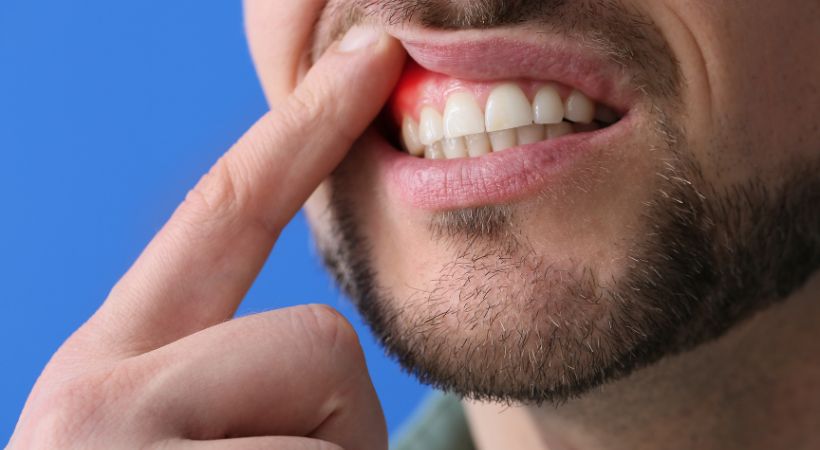


You're brushing your teeth, and as you spit out the toothpaste, you notice a slight tinge of red. That can be a sign of your gums bleeding. It's a problem many experience and often a sign that something isn't quite right with your oral health. But no need to worry as we at Latha’s Dentist & Dontist are known for bleeding gum treatment in Rajamundry.
Bleeding gums, also known as gingival bleeding, occur when the gums bleed easily, especially during activities like brushing, flossing, or eating. While it might seem like a minor inconvenience, it can be an early indicator of more significant issues with your gums or overall health.
To understand that you have a problem, it is important to Here are some common signs to watch out for:
Bleeding Gums: The most apparent sign is bleeding from your gums during routine activities like brushing and flossing.
Swollen or Red Gums: If your gums appear swollen or have a reddish hue, it could be a sign of gum inflammation or gingivitis.
Persistent Bad Breath: Gum disease can often lead to persistent bad breath, also known as halitosis, due to harmful bacteria in the mouth.
Receding Gums: Gums pulling away from the teeth, creating a longer appearance of the teeth, can indicate gum problems.
Tooth Sensitivity: Increased tooth sensitivity, especially to hot or cold temperatures, is mostly due to loss of tooth enamel but it can also be caused by gum sensitivity.
Pus between teeth and gums: The presence of pus may indicate a more advanced stage of gum disease.
Ignoring bleeding gums can lead to more severe oral health problems. Gingivitis, the early stage of gum disease, can progress to a more advanced stage called periodontitis. Here's what can happen if you avoid bleeding gum treatment:
Tooth Loss: Advanced gum disease can cause tooth loss as the supporting structures of the teeth weaken.
Bone Damage: Gum disease can lead to bone loss in the jaw, which can affect the stability of your teeth.
Chronic Infection: Untreated gum disease can result in chronic infections, impacting your overall health.
Compromised Aesthetic: Bleeding gums can affect the appearance of your smile, causing embarrassment and self-consciousness.
There are different types of gum treatments available depending on the severity of the infection and your overall health. Some of the common gum treatments are:
Professional teeth cleaning: This is a routine procedure that involves the removal of plaque and tartar from the teeth and gums. To prevent gum infections, it is recommended to have your teeth professionally cleaned at least twice a year.
Peeling and root planing: This deep cleaning is performed under local anesthesia. It involves scraping plaque and tartar from under the gums and smoothing the roots of the teeth to help them reattach to the gums. This can reduce inflammation and infection in the gums.
Pocket reduction surgery: This is a surgical procedure performed when the pockets between the teeth and gums are too deep for scaling and root planing to be effective. It involves lifting the gums and removing the infected tissue and bone. The gums are then sewn back into place to fit snugly against the teeth.
Guided Tissue Regeneration: This surgical procedure stimulates the growth of new bone and tissue in areas destroyed by gum infection. It involves placing a mesh-like material between the bone and gum tissue to prevent the gum from growing into the bone space. This allows the bone and tissue to regenerate and support the teeth.
These are some common gum treatments done for gum diseases. There may be other options depending on your specific condition and needs.
Proper care is essential for maintaining good oral health and preventing more severe problems. Recognizing the signs of gum issues and seeking treatment promptly can save you from potential tooth loss and other health complications. Don't let bleeding gums be a silent source of discomfort – consult an experienced dentist to address the issue and regain a healthy, confident smile. For consultation on bleeding gum treatment in Rajahmundry, visit us.